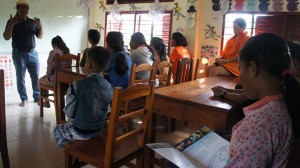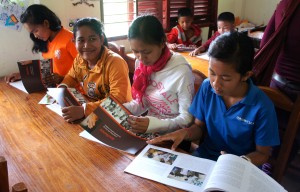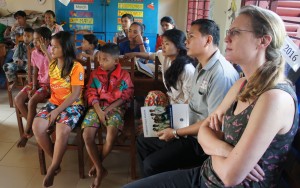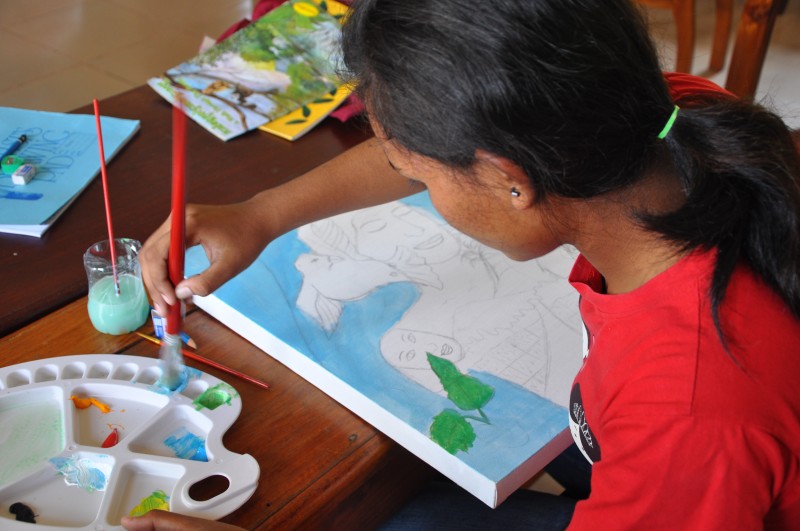Exploring Cambodia’s peace and history through art
 Centre for Peace & Conflict Studies co-founder and Cambodia Peace Museum visionary Ngarm Soth Plai and Siem Reap-based artist Sasha Constable recently visited the Cambodia Landmine Museum (CLMM) to give a presentation on peace to 26 youth ranging from 11 to 21 years old.
Centre for Peace & Conflict Studies co-founder and Cambodia Peace Museum visionary Ngarm Soth Plai and Siem Reap-based artist Sasha Constable recently visited the Cambodia Landmine Museum (CLMM) to give a presentation on peace to 26 youth ranging from 11 to 21 years old.
The presentation aimed to introduce and discuss issues around the concept of peace as preparation for a series of art classes and workshops conducted over the next five weeks.
All the workshop participants come from disadvantaged backgrounds and live in the CLMM Relief Centre, where they receive free education, accommodation and meals. The museum also builds and maintains other school facilities throughout the province and is committed to raising awareness about the importance of clearing landmines in Cambodia.
 History for the future
History for the future
During his presentation, Ngarm spoke about the history of conflict in Cambodia and the important role peacebuilders have played in the country’s journey away from conflict. He also shared his own story and explained how he changed his life from being a soldier for 13 years to supporting peace for the last two decades.
“For me it was very special talking with the kids about peace because it’s played such an important role of my life and in my country’s transformation,” said Ngarm. “There is a real need to keep the younger generations connected to not only our history but also understand our journey as a society and how ideas about peace have been turned into action by Cambodians over the last decades.”
Sasha Constable is providing technical support and guidance during the workshops as the students paint interpretations of what peace means to them.
 Art for peace
Art for peace
Sasha has worked with a wide range of Cambodian artists for more than 15 years as a mentor, teacher and coordinator, using various approaches and mediums to explore issues of identity, peace and transformation.
In addition to stone and canvas, she uses decommissioned weapons such as guns, unexploded ordnance and landmines as materials for sculptures, harnessing the process of physically transforming weapons into art as a way to promote a more peaceful, weapon-free society.
“In the past, the projects that I have done at the Landmine Museum have become almost therapeutic because it’s a way for the youth to confront issues that they might be having to deal with,” said Sasha.
“With this project it’s more about Cambodia as a whole and how it’s moved forward. I am really excited – it’s always great to work with children of that age and especially on a theme that can be quite difficult to explore for them.”

